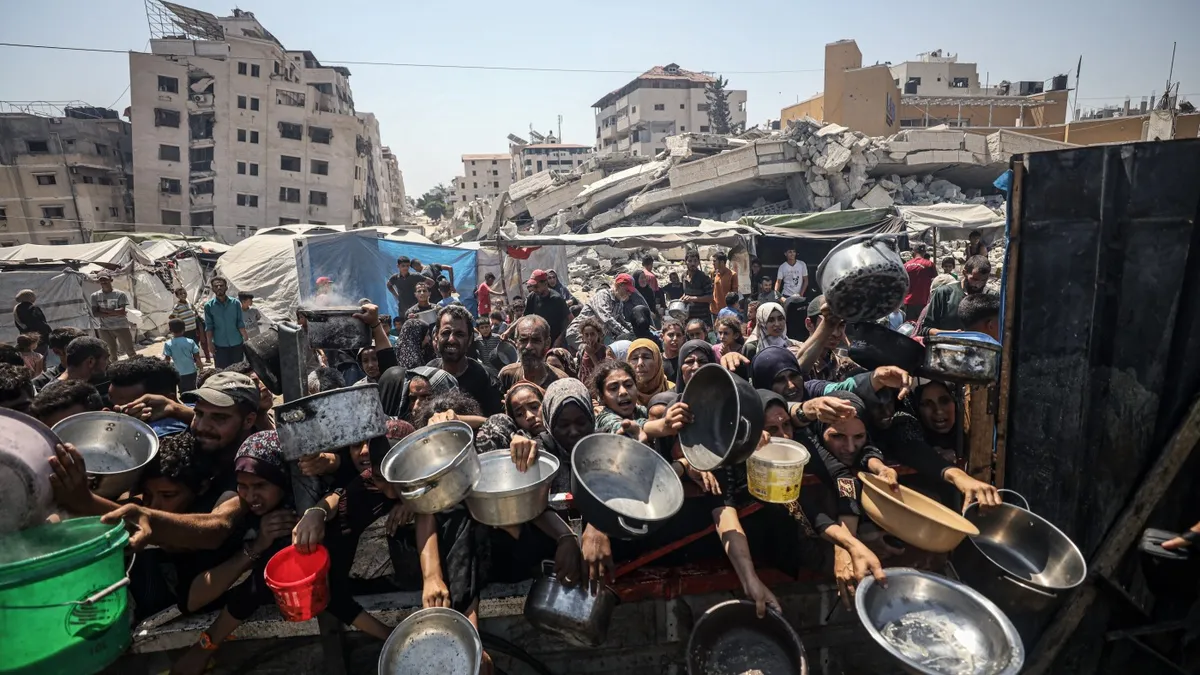
As the humanitarian situation in Gaza deteriorates, the region faces an alarming hunger crisis that is worsening by the day. Despite the catastrophic shortages of food, water, and medicine reported by the British Red Cross and the World Health Organization, Gaza has not yet been officially declared to be in a state of famine. The World Food Programme (WFP), a branch of the United Nations, revealed that an astonishing one-third of Gaza's population—approximately 2 million people—are currently going without food for multiple days.
On Tuesday, U.N. Secretary-General António Guterres described Gaza as a "horror show of devastation and starvation," highlighting the unprecedented levels of death and destruction in the area. However, the question remains: why is there hesitation in labeling the crisis as a famine? To understand this, we must look at the authoritative processes involved in declaring such a severe humanitarian emergency.
According to Tim Hoffine, deputy chief of party-innovation at the Famine Early Warning Systems Network (FEWS NET), there is a specific internationally agreed-upon system for gauging hunger crises. This system was established in response to famines in East and West Africa during the 1980s, as U.S. aid officials recognized the necessity for a reliable method to monitor global hunger. The aim was to provide independent, timely, and evidence-based analysis to aid decision-makers in preventing future famines.
In 1985, the U.S. Agency for International Development (USAID) founded FEWS NET to collect and analyze data on at-risk areas monthly. However, the lack of a universal standard for defining the severity of hunger crises complicated coordination among donors and aid organizations. Former WFP spokesperson Steve Taravella pointed out the need for a reliable and authoritative baseline for understanding hunger levels scientifically.
In 2004, during a food emergency in Somalia, FEWS NET and its international partners developed the Integrated Food Security Phase Classification (IPC) initiative, which serves as the authoritative mechanism for measuring hunger levels across different regions. The IPC is overseen by the U.N. Food and Agriculture Organization and engages expert working groups to analyze each crisis individually, providing a consensus-driven estimate of needs.
The IPC categorizes hunger into five phases. Phase one indicates normal conditions, while phase two shows stress where communities can still access food but struggle to afford other essentials. Phase three, termed "crisis," is where concerns begin to rise as people experience difficulty in obtaining enough food. In phase four, labeled "emergency," food gaps widen, and extreme coping strategies are employed, such as liquidating assets or consuming seeds meant for planting.
Only in phase five is a location officially considered to be in famine. Three specific criteria must be met: at least 20% of households must face a catastrophic lack of food leading to acute malnutrition and mortality; at least 30% of children under five must suffer from acute malnutrition or wasting; and at least two out of every 10,000 adults must die each day from non-trauma causes. In Gaza, FEWS NET currently classifies the situation as phase four, with estimates indicating that 925,000 Gazans—44% of the population—are experiencing emergency acute food insecurity.
FEWS NET's lack of operational presence in Gaza presents challenges for monitoring acute food insecurity. Collecting reliable data, particularly on non-trauma mortality, is often difficult in conflict zones, as Jean-Martin Bauer, the World Food Programme's director for food security and nutrition analysis service, explained. This lack of data can delay the official classification of famine, which is critical because by the time a famine is declared, people may already be dying from hunger.
Even if the IPC and FEWS NET find that all three famine criteria are met, they cannot unilaterally declare a famine. Their findings require review and approval from a committee of independent experts convened by the IPC. In the case of Gaza, while similar reports from both organizations have been reviewed and approved, the actual declaration rests with government institutions, U.N. leadership, and high-level representatives.
It's crucial to note that starvation can occur long before an official famine declaration is made. As Hoffine explained, many individuals may experience hunger-related mortality before the crisis reaches phase five. The ongoing situation in Gaza highlights the urgency for intervention, as prolonged inaction could lead to higher mortality rates.
Despite the grim circumstances, experts from FEWS NET and IPC assert that the hunger crisis in Gaza can still be alleviated if hostilities cease and aid workers are granted full access to the region. The classification system serves to alert the global community before it is too late, and while higher-phase designations do not mandate immediate action, they do serve as powerful tools for mobilizing humanitarian responses.
As the situation in Gaza continues to dominate headlines, the political implications of a formal famine declaration are often overlooked. Such a designation would not only increase pressure on governments and agencies to enhance aid efforts but would also compel Israel to permit full humanitarian access, potentially leading to significant diplomatic repercussions.